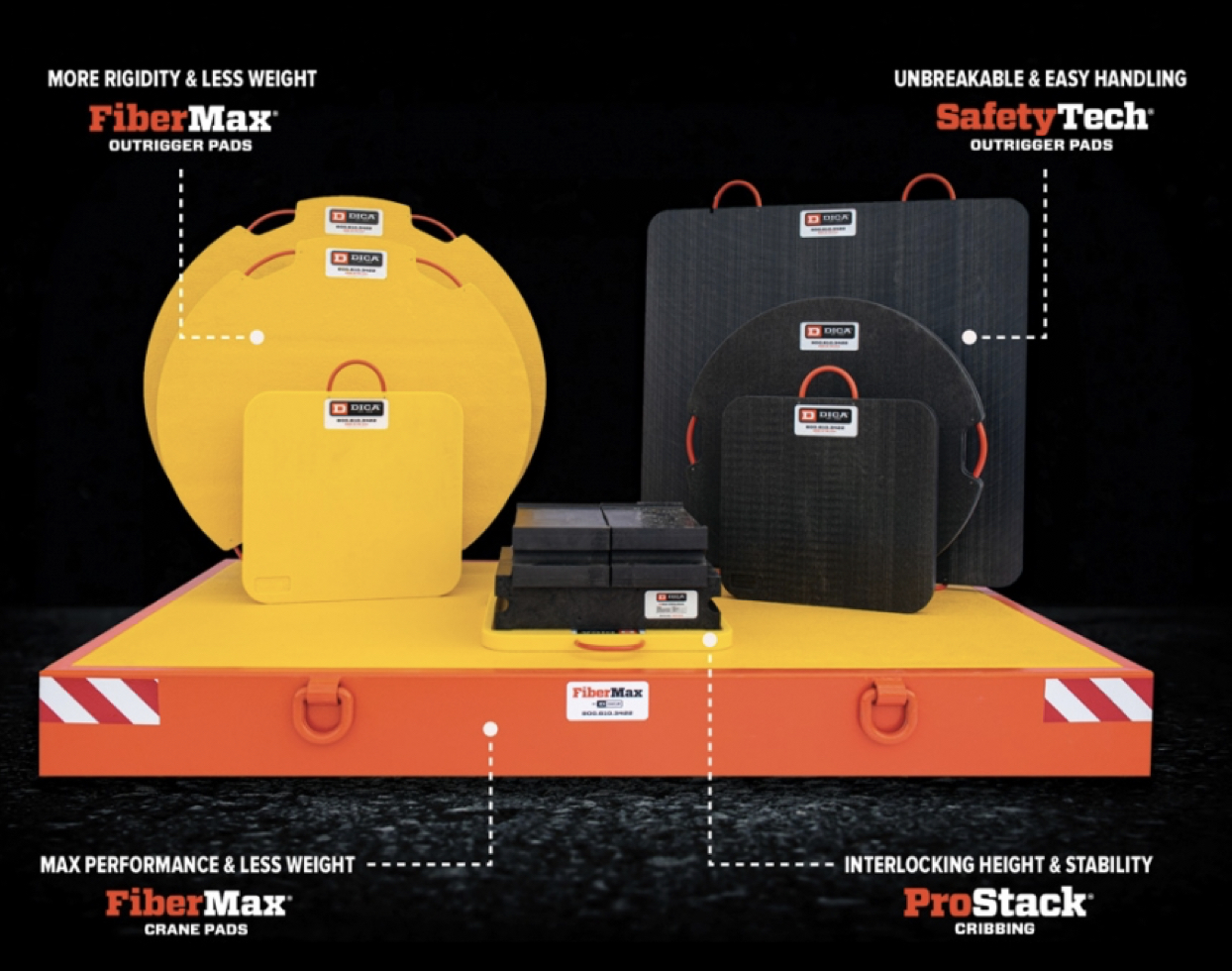
News
Education & Training
Safety & Risk Management
10 tips for a successful crane setup from DICA
June 8, 2020 By DICA

It can be difficult to know if the ground beneath your crane will support the weight and pressure under your outriggers, yet knowing this is critical to safe crane setup. In response to this need, regulatory bodies now place greater emphasis on understanding ground conditions and using crane mats or outrigger pads that are sufficient to provide the necessary foundation support for maximum crane safety.
Here are 10 mobile crane safety tips and topics for successful crane setup.
1 – Know your responsibilities. Cranes must be assembled on ground that is firm, drained and graded sufficiently, in conjunction with supporting materials, such as blocking, cribbing, pads, mats, to provide adequate support and levelness.
ASME states that outrigger blocking or cribbing must have sufficient strength to prevent crushing, bending or shear failure. And it needs to be of such thickness, width and length as to completely support the float, transmit the load to the supporting surface, and prevent shifting, toppling or excessive settlement under the load.
2 – Know the bearing strength of the ground and soils. Because this is an extremely complex combination, it’s a good idea to seek the advice of a geotechnical engineer. A low-cost way to determine ground conditions is to use a Dynamic Cone Penetrometer, which is portable and easy-to-use. This information can be compared to ground bearing pressure charts for different soil types.
3 – Identify any sub-surface hazards and avoid if possible.
4 – Evaluate and improve the ground if needed. Ways to improve the ground include compaction, removing un-compacted surface layers, or bringing in rock or other dense inorganic material. If the ground is wet, allow time to get the moisture out.
5 – Know the maximum pressure the crane will exert on each outrigger during the operation, or the maximum outrigger reaction force. Crane manufacturers provide this information for each crane model, and generally, it can be found in your operation manual. Many also offer free software solutions that allow you to input the lift data, which then outputs the outrigger reaction forces that will be generated.
6 – Select the right size outrigger pad or crane pad. Undersized pads can put you in an unstable condition, but oversized pads are inefficient in terms of purchase, labor, and transportation costs. Several methods are commonly used in the industry. DICA has evaluated each of these and have found that various methods produce widely varying conclusions and most methods don’t take into account the ground condition. DICA strongly suggests that you should use a sizing method that takes into account ground conditions (ground bearing capacity), and actual outrigger loads.
7 – Choose crane pads or outrigger pads that are designed and constructed to meet or exceed the bearing, flex and shear strength required. Their purpose is to distribute the load from the outrigger float over a large enough area that the bearing pressure to the ground surface is acceptable. They must be stiff enough that the crane will not go out of level as the load swings.
8 – Never place blocking, cribbing, pads or mats under the outrigger beam. Only use them under the outrigger floats or pontoons.
9 – Monitor every lift. If the outrigger pad or crane mat is showing significant deflection or bending, stop the lift. The outrigger force is greater than the pad and ground can support. Additional appropriate blocking or cribbing should be added. If the pad or mat is being driven into the ground, stop the lift. The pressure under the pad exceeds the ground bearing capacity. A larger pad, blocking or cribbing is needed to spread the load over a larger area, or the ground needs to be improved to adequately support the load.
10 – Use common sense. If it doesn’t look right, stop. If it doesn’t act right, stop. If it doesn’t feel right, stop. Products are never a replacement for common sense. Use your common sense. You never know the life you save may be your own.
Print this page